Urban / small-space gardening - introduction
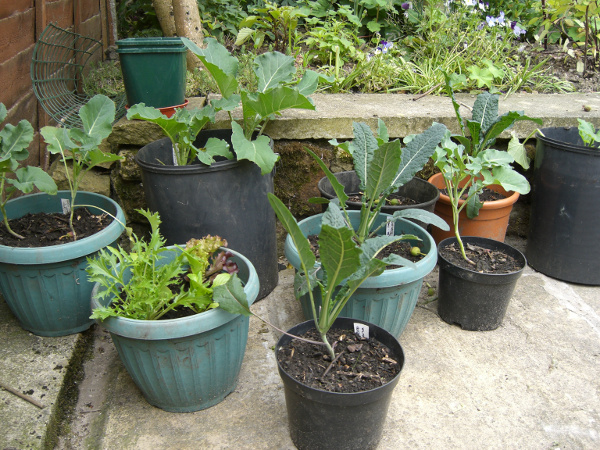
“It’s a little radical to put vegetables in your front garden, a statement that you can do whatever you want in your own damn yard.” – Warren Schultz
Contents
What is small-space gardening?
The vast majority of us have limited space in which to grow things, but this isn’t necessarily the huge disadvantage to increasing self-reliance that it might seem. All gardening is about the accumulation of resources into a relatively fertile and intensively-managed area; with small-space gardening we make the most we can of the area in which we garden, and we find that working on a manageable scale can make our systems highly productive and rewarding, as well as positive for our immediate environment.

In front of the nasturtiums and blackcurrants in the border, a tiny piece of lawn has been turned into a veg plot with lettuce, spinach and brassicas.
Gardening then has always involved concentration on relatively small areas. We are used to the idea that our food comes from industrially-farmed prairies, but those landscapes are neither as productive by area nor as ecologically diverse as small intensive gardens tend to be.
The small garden starts perhaps as the sun-trap on the forest edge where fruit and herbs proliferate, where nettles grow early against the bank; it becomes the hard-won clearing or the raised beds where accumulated organic matter makes black soil; from early times containers were used, setting plants above the cold ground and within reach of the back door. This tradition has never disappeared and now, from Incredible Edible to the world’s guerilla gardeners, growing food on verges, traffic islands and abandoned plots, there is a renaissance in intensive, opportunistic, and defiant gardening in the nooks and the crannies of our towns and cities.

Sage and thyme in the foreground, and in the background, chives, parsley, broccoli, chard, kale, lettuce, rosemary, orach and an apple tree – all in containers in a tiny, gravelled front garden. In monetary terms alone, it’s really worth it.
If you have a windowsill then you can garden; you can turn a few pence worth of seeds into a regular supply of salad or of normally expensive herbs. If you have a sunny wall to fix containers to, you have your own walled garden; if you have a balcony and sunshine, you have a micro-field, a place to model not on the harsh and arid lines of the city, but on nature, on the forest. A roof that is accessible is a space waiting to be gardened. Once we get to people who have conservatories and even small gardens, we are into the realm of the privileged. It is nothing short of a terrible waste to see these kind of places put down to gravel or concrete; when we do this we are modelling deserts, and the Earth doesn’t need more of those.

Another typical front garden – above with the almost ubiquitous concrete slabs, and below with the slabs removed and after planting an apple tree, gooseberries, blackcurrants and strawberries.
Small and urban gardens present their own challenges, but often they enjoy distinct advantages over other places to grow food. Small spaces can be managed to create excellent micro-climates for gardening: they can be sheltered and enjoy the benefits of being in urban heat islands; roofs present opportunities for rainwater harvesting, and structures can be adapted to support trellises or mini-greenhouses.

And if you’re really keen – another front garden.
Townscapes also present myriad opportunities for scrounging the materials to make our gardens: pallets become planters; all sorts of containers can be pressed into service, and if you’re lucky enough to live near stables or an urban farm, manure will not be a problem. Grass cuttings and the same wood chippings that cost money in the countryside can be had for free in towns and cities; pretty soon your garden will be performing valuable ecological services: recycling and composting, as well as growing food.
If you have some ground then most likely, even if it’s buried under the skin of the city, there is soil. That’s a great start. But whatever, you’ll want to build your own soil as well, and if you’re starting with containers on a roof, or a balcony, you’ll have little choice but to do what gardeners have always done, to make the black stuff yourself.

Growing seedlings indoors before planting out.
What are the benefits of small-space gardening?
It’s hard to imagine one single change that could more dramatically transform our built environment than a massive adoption of urban food small-space gardening. The only thing stopping us realising William Morris’ vision of cities full of vegetable gardens and fruit trees is our lack of community and imagination.
Incredibly inspirational video showing what can be produced on an urban ‘micro-farm’. This Californian family produce 2700kg of food from one tenth of an acre (0.04 hectares).
Gardening brings enormous health benefits all on its own of course: exercise and good food in return for it. Any home gardening should also be good for the purse and the smaller your gardening project the more you should concentrate on the high value or rare crops you like. A balcony garden is probably not the place to grow a few kilos of potatoes that could be bought for a couple of quid, but if you grow salads, basil, parsley, strawberries and even some lemons from a tree in a pot, your balcony garden could be worth hundreds of pounds over a year.

Really productive urban raised beds.
Garden for happiness, for your living environment, for good food and to save money. Urban, small-space gardening is no different to any garden in these ways. Beyond that, by growing your own food you are reducing food miles and your own ecological footprint; it would do every single person on Earth good to grow some of their own food, and to look after some living soil.

Used food containers allow this tiny balcony to produce lots of food, and to look really pretty.
What can I do?
Small-space gardening can be a great place to start a gardening career. Your one nasturtium seed in an old yoghurt pot can be the experience that starts you working on much more ambitious projects. Here are some things you need to think about:
- You’ll need to define the space for your small-space gardening project. This could be a small garden area or a balcony; it could be no more than a window box.
- You may be lucky enough to have soil, otherwise you will need to work out what your growing medium will be. In some places green waste compost is available very cheaply from the council, but you might equally start with a trip to pick up some well-rotted horse manure, or something more exotic if your local urban farm has an alpaca or two.
- Raised beds might be the best way to go if you have the space and ground to build them on – the so-called ‘lasagna bed’ starts with cardboard and compost, manure and grass cuttings; this carefully-layered approach will give you a sort of compost heap garden that will mature into a highly-productive patch. Don’t tread on it though.

A vertical garden that has no horizontal footprint at all.
- If you can’t have beds then you’ll need to find containers. This will certainly be the case if you’re a balcony gardener or a windowsill farmer. Containers can be scrounged from all sorts of previous uses: do you have space for a shipping pallet or two? They can be turned into excellent herb and salad beds. Buckets, barrels, old bottles and pots can all be turned into growing spaces.
- You will probably need some tools although not a whole shed full. Light hand tools will suffice and if you get them from a car boot sale, or from the seasonal aisle in a supermarket, they will cost very little.
- One of the challenges of small-space gardening using containers is making sure that your plants don’t dry out. You’ll definitely need to work out where the water for your garden is coming from. Whilst tap water can do for some projects, it’s better to harvest rainwater: you’ll need a rain butt of some sort, and a watering can; you might find a use for guttering, pipe and a hose. There are all sorts of clever ways to water intensive gardens and containers, but pretty much every technique can be put into place with scavenged materials and a little craft.

Herbs in pots just outside the back door, close to the kitchen.
With a little planning and regular attention it’s easy to get good results from your small garden. That’s the key though, and you should be sure to start on a scale you can manage. You have to be as realistic about your time and commitment as you have been about your space and other resources. Once you begin growing you will see all kinds of potential in your small-scale gardening system to add productivity and diversity, to increase or improve your yield, but if you start without a plan and take on too much you risk storing up problems and joining the ranks of people who believe gardening is too difficult for them, just because they set off on the wrong foot.

…and even closer – on the kitchen windowsill.
Any garden will present its own challenges, problems and opportunities. You may find for example, that your space does not enjoy sunlight all day long, or it may be so hot and sunny that you struggle to keep your plants well watered. Finding solutions, choosing the crops that prosper under your hand, and adapting your ideas to fit, are all central to gardening no matter where you find yourself, no matter if you have 2 square metres or 10 acres.
Specialist(s)
Thanks to Paul Jennings of Lowimpact.org for information.


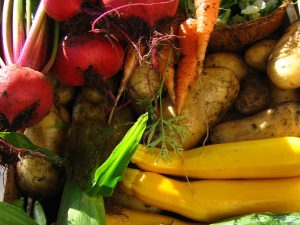
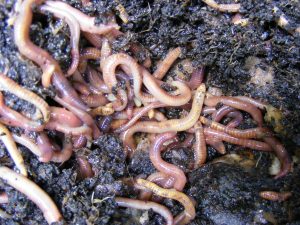

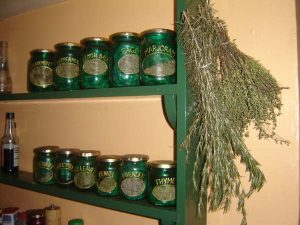

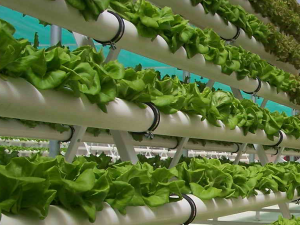

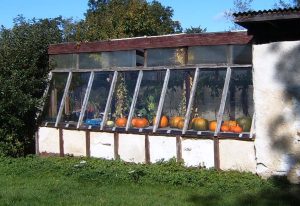
3 Comments
Vertical Gardening, the only way is up ! I am running plant climber workshops in West Somerset, showing you how to make obelisks for your balcony beans, or patio pots. 20th April Crowcombe Church House, 7pm till 9.30 pm, 21st Minehead, Quaker Meeting House, 7pm till 10pm, 22nd Watchet Sanctuary 7pm till 10pm, 23rd Wiveliscombe Com.Cent. 2 till 5pm and Sun 24th April at Wellington Community Centre. I’m doing two workshops in London, at the South London Bot. Inst.on 25th May 2 till 5pm and Brockwell Greenhouses later to be confirmed. I am trying to publicise my workshops, please let everybody know ! THANKS Naughty Magpie Willows.
Hi
Your link to the square foot gardener above appears to have been hijacked and took me to advertising for garden rooms, thought I`d best let you know.
Jan – thanks for letting us know. I’ve removed the reference. I did try to find another square foot gardening link, but they suggest that sphagnum peat moss is necessary. Of course, it isn’t necessary – millions of people grow vegetables without any access to peat moss – and the mining process, not to mention its transport, is not sustainable. Compost is fine.